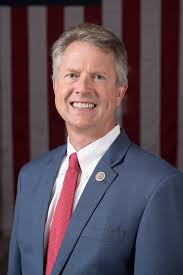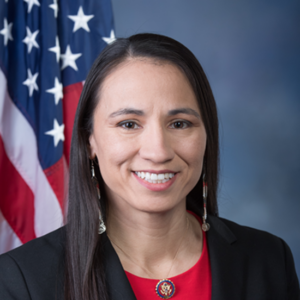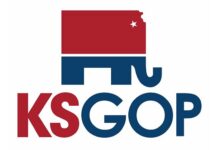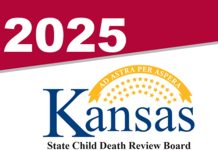Health insurers that provide coverage on the Affordable Care Act exchanges for 200,000 Kansans are seeking rate increases for 2026, reflecting a trend seen nationally with the future of an enhanced tax credit to offset premium costs in doubt.
Five insurers – Blue Cross and Blue Shield of Kansas, UnitedHealthcare, Celtic Insurance, Medica Insurance and Oscar Insurance – have filed requests for average rate increases ranging from 10.1% to 39.9%. Blue Cross and Blue Shield of Kansas City’s rates would drop an average of 6.14%.
The average requested rate increases are:
Blue Cross and Blue Shield of Kansas: Average requested increase 16.38% with the rate change per plan varying from 8.9% to 20.83%
Celtic Insurance (owned by Centene): Average requested increase 39.97% with the rate ochange per plan varying from 36.55% to 45.93%
Medica Insurance: Average requested increase 29.31% with the rate change per plan varying from 22.36% to 37.39%
Oscar Insurance: Average requested increase 14.44% with the rate change per plan varying from 12.76% to 17.88%
UnitedHealthcare: Average requested increase 10.11% with the rate change per plan varying from 5.6% to 16.16%.
Blue Cross and Blue Shield of Kansas City: Requested an average rate cut of 6.14% with the rate change per plan ranging from -11.55% to a 1.84% increase.
The rates are not final and are subject to review by the Insurance Department, which only has the authority to disapprove them if they are unreasonable in relation to the benefits provided under state law.
Officials caution that very few consumers will see the rate increases requested.
They said the amounts could be more or less depending on consumers’ eligibility for the tax credit, the health plan they choose, whether they change plans and where they live.
Health care think tank KFF reports that for 2026, the median proposed premium increase for 312 insurers nationally is 18%, about 11 percentage points higher than for 2025. KFF reports that it is the largest rate change insurers have requested since 2018.
Among the 312 insurers in the ACA Marketplace nationally, premium changes range from minus 10% to a 59% increase, KFF reported, but most proposed premium changes for 2026 fall between about 12% and 27%.
The rate increases come at a time when the enhanced premium tax credit to cover the cost of premiums on the exchange is set to expire by the end of the year if they’re not extended by Congress, potentially causing millions to fall off the insurance rolls.
Critics point to the expense of extending them, noting that the Congressional Budget office reported that direct spending would increase by nearly $275 billion from 2025 to 2034 and that revenues would decrease by more than $60 billion in that same period.
The CBO said a permanent extension would add an overall roughly $355 billion to the budget deficit for over the next 10 years.
Groups such as the Heritage Foundation say the enhanced tax credit benefits wealthy consumers who already have access to coverage and that it will cause employers to drop their existing coverage and force workers into a government program.
However, the enhanced tax credit approved during the pandemic is seen as one reason why enrollment on the ACA exchanges has reached record heights in recent years.
Many consumers who are covered by a plan available through the ACA exchanges get a monthly tax credit that reduces their insurance premiums.
When Congress approved the $1.9 trillion COVID stimulus bill in 2021, the legislation included a measure with an enhanced tax credit that increased their value and expanded their eligibility.
The enhanced premium tax credits were originally set to expire at the end of 2022 but were then extended as part of the Inflation Reduction Act until the end of 2025.
“Congress should not have enacted these temporary expansions,” the Heritage Foundation said in a 2021 report.
“It would be worse to make them permanent.
“Doing so would do little to increase health insurance coverage.
“Instead, it would establish an entitlement to premium assistance for the wealthiest households. and funnel hundreds of billions of additional taxpayer money to insurance companies on behalf of people who already have coverage.”
Since the enhanced tax credits were approved, enrollment in the ACA exchanges has skyrocketed.
Last year, Kansas set a record for the number of people enrolled in an insurance plan available from the Affordable Care Act.
The Centers for Medicare & Medicaid Services reported that 200,046 Kansans signed up for a health insurance plan offered by the ACA for 2025.
It’s a 16.7% increase from the 171,376 who enrolled in the ACA last year and almost 3 1/2 times more than the 57,013 who enrolled the first year the benefit was available in 2014.
A recent analysis conducted by the Kansas Health Institute showed that the heaviest concentrations of Kansans enrolled in the ACA plans were in parts of Olathe, Salina, Kansas City and Wichita.
Nationally, there were 24.3 million people enrolled in insurance plans at the start of this year, compared to 11.4 million in 2020.
Those numbers are expected to drop off with the elimination of the tax credit.
KFF estimates that between 41,000 and 68,000 Kansans will drop off the rolls over the next decade because of the loss of the enhanced tax credit coupled with rules that are intended to strengthen the eligibility determination process.
If the enhanced subsidies are not renewed, the premiums for people enrolled in an ACA plan would increase by more than 75% nationally on average, with people in some states seeing their payments more than double, KFF reported.
“Kansans that are enrolled in the Marketplace are going to have sticker shock,” said David Jordan, president and CEO of the United Methodist Health Ministry Fund.
“We think a lot of people are going to lose coverage, but it’s also going to impact families’ budgets significantly,” Jordan said.
Of the 312 filings nationally, four insurers proposed rate cuts while 125 sought premium increases of at least 20%. The filings – in Kansas and elsewhere – are preliminary and may change during the rate review process.
The rate increase requests are attributable to a number of factors, including the expiration of the enhanced premium tax credit, which is expected to drive up premium rates for consumers and change the makeup of the marketplace.
Younger and healthier consumers are expected to leave the program because of higher costs, making the Marketplace less healthy on average.
For instance, about 21% of Kansas enrollees were under age 26 and about 36% were ages 26 to 44, according to Kansas Health Insurance Institute data. About 23% of consumers were in the 55-to-64 age bracket and more likely to less healthy.
Blue Cross and Blue Shield of Kansas, which insures about 19,000 on the exchanges, anticipates a 2.5% increase in morbidity from enrollment changes as a result of the expiration of the enhanced tax credit, records show.
The company did not respond to a request for comment.
Celtic Insurance, which covers about 111,000 Kansans on the exchange, is seeking a rate increase because of an increase in the consumer morbidity levels that are expected to escalate in 2026 if the enhanced tax credit expires.
Executives from Celtic’s owner, Centene, discussed the matter in an earnings call last month.
The company’s CEO, Sarah London, said the insurer saw a higher-than-expected percentage of healthy members leave the Marketplace during open enrollment this year because of enhanced eligibility verification requirements imposed by the federal government.
London also said new signups had a higher morbidity, likely reflecting changes in the
underlying composition of its members resulting from redeterminations and the same program integrity guardrails that it said deterred new healthy signups in 2025.
“Our 2026 pricing adjustments account for the morbidity shifts we observed in the 2025 data,” London said on the call. “But they also account for shifts we now expect to see in certain markets in 2026…”
UnitedHealthcare, which covers about 25,300 Kansans in the exchange, reported similar reasons for seeking a rate increase.
In documents filed with the Centers for Medicare & Medicaid Services, the company reported annual increases in reimbursement rates to health care providers, such as hospitals, doctors and pharmaceutical companies.
It also cited the evolution of medical technology and clinical practice that results in the use of more expensive services, leading to increased health care spending and utilization.
And like other providers, it cited the expiration of the enhanced premium tax credits, which will likely lead to a sicklier consumer base if healthy members leave the Marketplace because the credits expire.
It also expressed concern about insurance deductibles.
The company said in its filing that if health care costs continue to rise every year and deductibles and copayments remain the same, a higher percentage of health care costs need to be covered by health insurance premiums
The company did not respond to a request for comment.
Oscar Insurance Company, which insures about 13,000 people on the exchanges in Kansas, named several reasons for the increase.
“Changes to the overall premium level are needed because of anticipated changes in the underlying morbidity of the projected marketplace,” the company said without mentioning the enhanced premium tax credit.
The company did not return an email seeking comment.
The question left to be answered is what the future of the enhanced tax credit is, especially with open enrollment for 2026 starting in November.
Ellen Montz, a managing director with Manatt Health, said she is more optimistic than she was a month ago that the tax credit would be extended.
Montz notes that the fallout from the loss of the enhanced premium tax credit will be felt in the near future – this fall – compared to other health care policy changes that were made in the “One Big, Beautiful Bill.”
“Folks in Congress are starting to realize what a large impact the expiration of these premium tax credits will have,” Montz said.
Montz said Congress could wait until after open enrollment starts in November7 to extend the enhanced tax credit, but that would be problematic.
“It would be totally messy and people would already be very mad,” she said.
“If Congress is looking to avoid quite a large political problem, you probably want to extend premium tax credits before people start looking at what their premiums are going to be without them,” she said.
As members of Congress return to their districts, she believes they are learning the kitchen-table impact of what the expiration of the tax credits will mean, especially among groups that tend to be more supportive of Republicans.
Supporters note that the enhanced tax credits have sparked enrollment growth in red states such as Kansas, Texas and Florida.
Plus, many small business owners that tend to lean Republican count on ACA coverage. An analysis from the Treasury Department found that 3.3 million Marketplace enrollees, or about 28%, were small business owners or self-employed in 2022.
Additionally, they point out that traditionally Republican rural areas could be hurt by the loss of the tax credit, which could apply more pressure to Republican lawmakers to take action.
“This is a political problem,” Montz said.
“These are political impacts that will happen very soon,” she said.
Cindy Samuelson, spokesperson for the Kansas Hospital Association, said her national group has heard some talk that Congress could agree to a two-year extension or a four-year extension of the enhanced tax credit.
Samuelson also said the tax credit could be extended, but the enhancement might be modified so that some consumers might lose the benefit.
KHA’s preference, she said, would be for the enhanced credits to be extended as they currently exist.
The offices of U.S. Sen. Jerry Moran and U.S. Reps. Derek Schmidt and Tracey Mann did not respond to questions about extending the enhanced tax credit. A spokesperson for U.S. Ron Estes, who sits on the Ways and Means Committee, declined to comment.

U.S. Sen. Roger Marshall said the issue should be focused more on controlling health care costs, which the insurance companies blamed partly for their need to seek higher rates.
“The real problem here is the cost of healthcare,” Marshall said in a statement.
“This year, we’re expecting rating increases of anywhere from 12 to 18%. My emphasis right now is on how to bring those costs down,” he said.
Marshall added that he’s been working with Health and Human Services Secretary Robert F. Kennedy Jr. and U.S. Agriculture Secretary Brooke Rollins to address chronic illness.
“Ninety percent of healthcare dollars are being spent to treat these seven chronic diseases: heart disease, hypertension, obesity, diabetes, Alzheimer’s, Cancer center, depression, and anxiety,” Marshall said.

“If we can create a healthier America – the cost of healthcare will go down.”
U.S. Rep. Sharice Davids, meanwhile, cosponsored a bill in 2023 to extend the enhanced tax credit.
“Federal Republicans refused to extend health care premium cuts for hardworking Kansans, yet gave billionaires tax breaks in their extreme budget — driving premiums up by $708 a year for Kansas families and limiting access to care,” Davids said in a statement.
“That means children, seniors, people with disabilities, and single parents could be forced to choose between putting food on the table and getting the care they need,” she said.
“That’s plain wrong, and I’m pushing for bipartisan solutions because this affects every Kansan, no matter their political party.”















